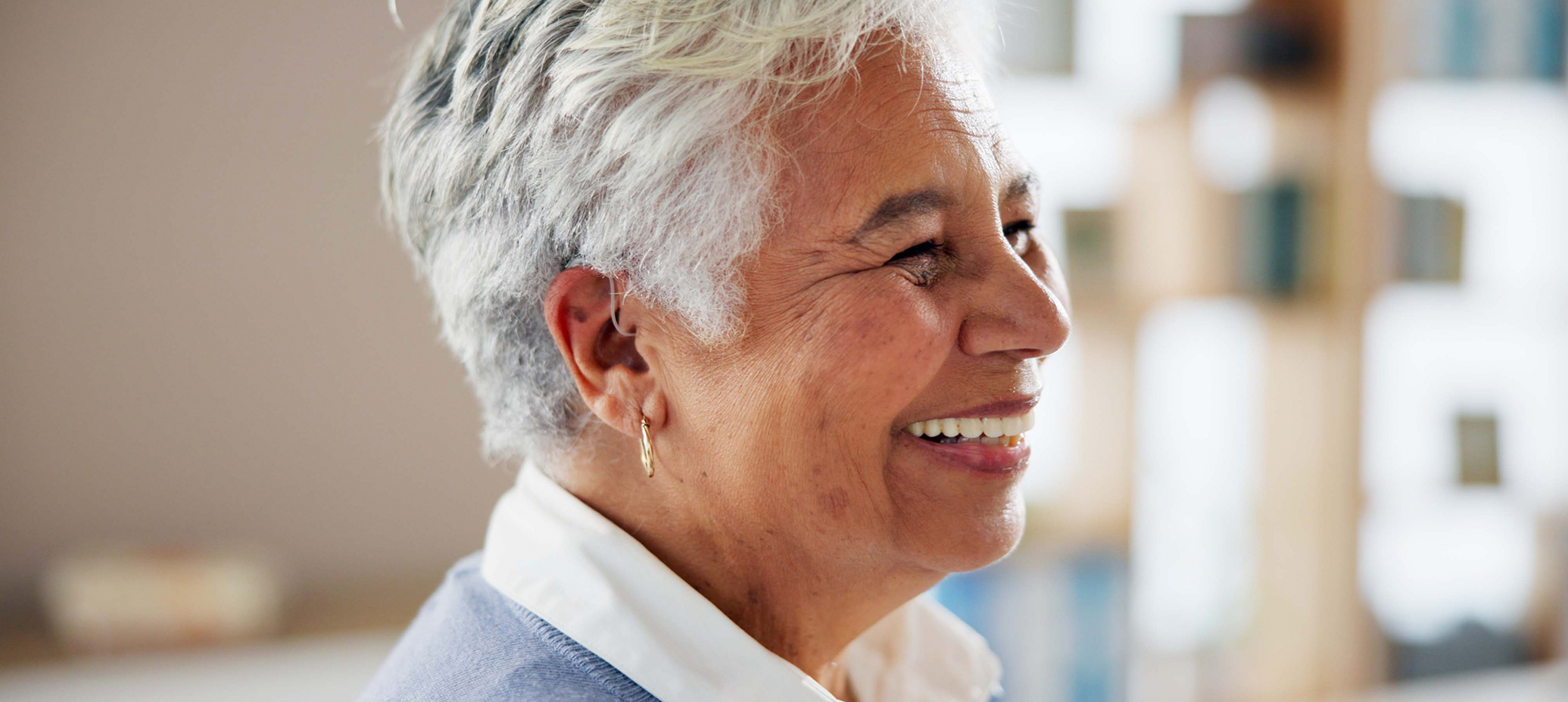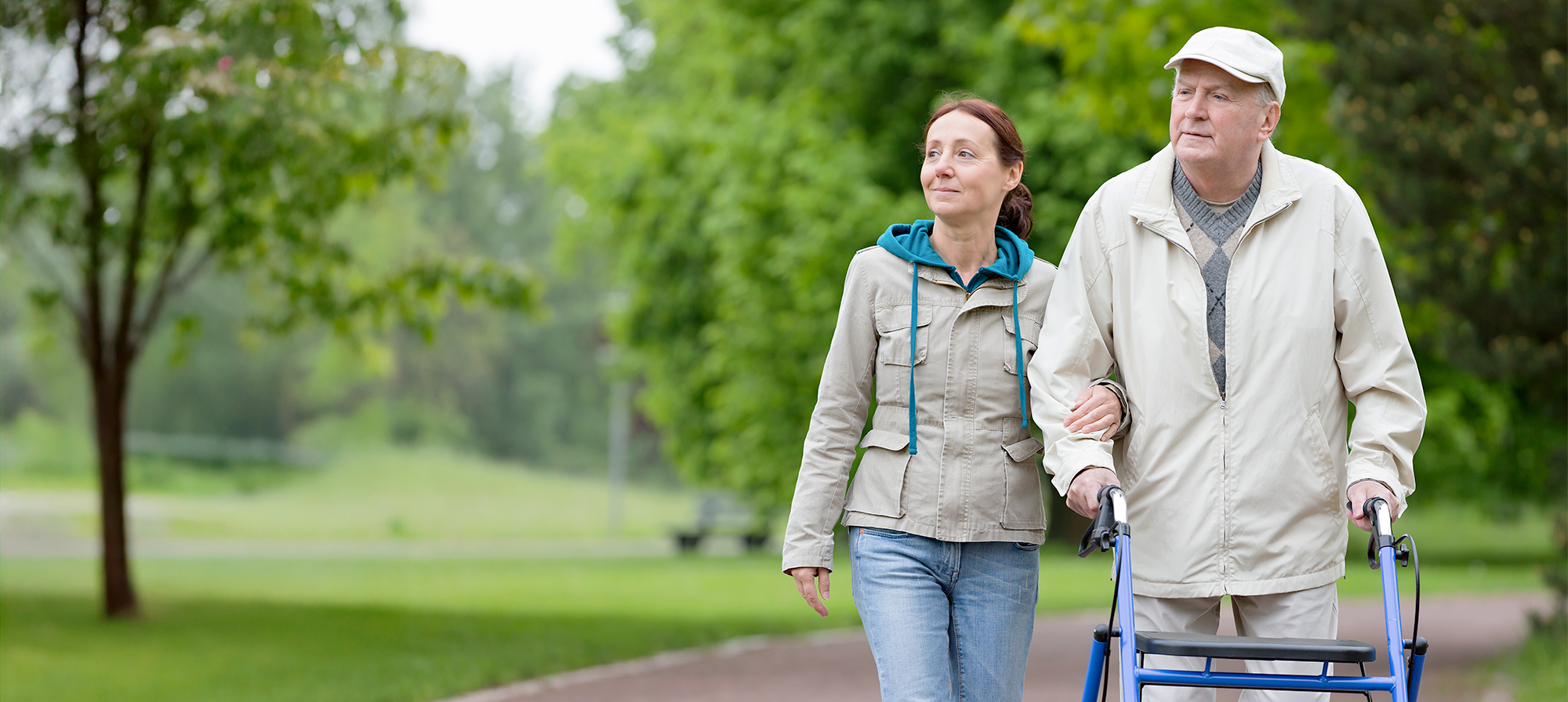Bone density is a measure of how strong your bones are. And though bones tend to weaken over time, you can keep, and even boost, your bone density at any age.
Your bones are living tissue. Your body constantly breaks down bone and then builds it back up. But by your mid-30s, your body starts to break down bone more quickly than it can replace it. Other factors may also play a role in this process.
If left unchecked, this loss of bone density can eventually cause your bones to become weak and fragile. In early stages, this is known as osteopenia. If bone loss continues, it can lead to osteoporosis, which is a condition where your bones are extremely frail and brittle. Bones in this condition break more easily. And for older adults, broken bones are often the beginning of the end of mobility and independence.
The good news is that, no matter your age or your other risk factors, there are steps you can take to keep your bones as strong as possible. Even if you already have osteopenia or osteoporosis, you can take steps to manage it and slow its progress.

Assess your risk factors
There are a number of risk factors that can contribute to a loss of bone density. Some of these risk factors are outside your control, and others are medical issues that you may need to treat or manage with the help of your doctor. But some are lifestyle choices that you have a lot of control over.
The risk factors that are out of your control include the following:
- Age. As mentioned, once you reach your mid-30s, your body starts to break down bone faster than it can build it back up.
- Sex. Although both men and women are at risk of osteoporosis as they age, women are at greater risk. When a woman reaches menopause, estrogen levels begin to drop. This hormone helps keep calcium in a woman’s bones. Within 5 to 7 years after menopause, a woman can lose up to 20 percent of her bone mass.
- Race. If you are white or Asian, you are at a greater risk of developing weak, brittle bones.
- Family history. If you have a parent or a sibling with osteoporosis, that can increase your risk of it.
- A small body frame. Both men and women with small frames tend to have less bone mass.
The medical issues that you may be able to manage or treat with the help of your doctor include:
- Hormone and/or electrolyte imbalance, which can lead to bone loss
- Eating disorders, which can lead to a lower intake of calcium and vitamin D and weaken your bones
- GI tract conditions or surgeries that make it harder for your body to absorb calcium and vitamin D from your food
- Long-term use of certain medicines that decrease the amount of calcium your body absorbs; these include steroids and drugs to treat gastric reflux, cancer, seizures, and transplant rejection
Finally, the lifestyle choices that you have a lot of control over include the following:
- Not getting enough calcium
- Not getting enough vitamin D
- Not getting enough exercise, especially weight-bearing exercise
- Drinking too much alcohol
- Smoking or using tobacco
Talk with your doctor about all of your risk factors. Then work with your doctor to address any that you can.
If you have any health issues that may raise your risk of bone loss, it’s crucial to catch those early on and treat or manage them, if possible.
And if certain lifestyle choices are raising your risk, it’s vital to make changes.
Take steps to protect your bone density
Here are 5 steps you can take to improve your bone density. These 5 steps relate directly to the lifestyle choices that can influence bone health.

1. Get enough calcium
Getting enough calcium in your diet plays a big role in keeping your bones strong. Your body stores calcium in your bones. This mineral helps strengthen and build up your bone mass. If you don’t get enough calcium, your bones may become brittle and weak.
The best way to get calcium is by eating whole, healthy foods that are rich in it. Some good sources of calcium include:
- Dark green vegetables like kale, broccoli, or spinach
- Salmon and sardines
- Nuts and seeds
- Calcium-fortified orange juice and breakfast cereals—look for whole grain and low sugar varieties
- Dairy foods
Experts recommend that you get around 1,000 to 1,200 milligrams of calcium each day. These are general guidelines. Talk with your doctor to find out exactly how much you need.
If you’re concerned you’re not getting enough calcium from your food, your doctor may suggest a supplement or recommend other helpful ways to boost calcium intake based on your health needs.

2. Make vitamin D a priority
Vitamin D is just as important as calcium for keeping your bones strong and healthy. Calcium helps build strong bones, but you need vitamin D to absorb the calcium from your food. Exposing your skin to 15 to 30 minutes of sunshine 3 times a week may be all your body needs to make enough vitamin D. Any more than that can lead to sunburn or other health risks. But for some people, sun exposure is not enough.
You can also get vitamin D from food, but it isn’t as easy. Studies show that people only get about 20 percent of their vitamin D from food. Some good sources include:
- Egg yolks
- Fatty fish, such as salmon, tuna, and sardines
- Foods fortified with vitamin D, such as milk and other dairy foods and orange juice
Up to age 70, experts recommend that you get at least 600 international units (IU) of vitamin D each day. If you are over 70, you may need 800 to 1,000 IU of vitamin D each day. Talk with your doctor to find out how much you need. If your vitamin D level is too low, your doctor may suggest you take a supplement or recommend other healthy ways to boost your intake.

3. Focus on weight-bearing exercise
Another key step to building and maintaining strong bones is weight-bearing exercise. Weight-bearing exercise is exercise that makes you work against gravity. Bones get stronger and denser when they are exposed to any type of force—like weight or gravity.
Some weight-bearing cardio workouts you might want to try include:
- Brisk walking or hiking
- Dancing
- Playing tennis or pickleball
- Jumping rope
- Jogging or running
- Climbing stairs
- Tai chi
- Lifting weights
- Using resistance bands
Higher-impact workouts boost bone health to a greater degree than lower-impact workouts. So, running or jumping rope would boost bone density more than walking or tai chi.
But if your bones are fragile, higher-impact workouts might not be the best choice. Plus, higher-impact workouts are harder on your joints, so you might want to stick to lower-impact workouts if you have joint pain or arthritis. Talk with your doctor to see which weight-bearing exercise might be best for you.
It’s also important to add strength training to your routine. Strength training workouts also put stress on your bones, and so they can help your bones get stronger. You can lift weights or work out with resistance bands or weight machines. Or you could just use your body weight by doing push-ups, squats, or lunges.
Silver&Fit® offers free workouts on Facebook Live and YouTube. There are a variety of classes suited for all fitness levels. Classes include strength training and weight-bearing workouts, like dance and tai chi. And Silver&Fit members can access workout videos available anytime by logging in to SilverandFit.com.
Make sure to talk with your doctor or physical therapist before beginning or changing your exercise routine.
4. Avoid heavy drinking
Drinking too much alcohol can make it harder for your body to make vitamin D. A long-term habit of heavy drinking may also lead to lower levels of hormones in both men and women that help keep bones strong. If you drink heavily, talk with your doctor about steps you can take to cut back or quit.
5. Quit smoking
Smoking or using tobacco is another habit that makes it harder for your body to absorb calcium from your food. It also hinders blood flow to all of the tissues in your body, including your bones. If you smoke or use tobacco, talk with your doctor about steps you can take to quit.
Taking these 5 steps can help prevent or slow the loss of bone density and can help keep your bones healthy and strong.
Get screened for osteoporosis
Experts recommend osteoporosis screening for women age 65 and older. They also recommend screening for women younger than 65 who have an increased risk of this condition.
A bone density test is the best screening tool. This test uses an X-ray to create images of the bones in your hip and spine. Those images reveal your level of bone density. If you catch the problem early enough, your doctor will discuss options to strengthen your bones and prevent further bone loss.

Treatment for osteopenia and osteoporosis
If you have osteopenia or osteoporosis, your doctor will likely want you to make the 5 lifestyle changes listed above. It’s also a good idea to take steps to reduce your risk of falls. There are also medicines you can take that might help strengthen your bones. Your doctor may recommend that you take one to further protect your bones.
Taking care of your bone health can benefit your overall health. Good bone density can help keep your bones strong, even as you age. That can help lower your risk of breaking a bone in the event of a fall or other injury. And that can help you stay on your feet and independent for many years.
Not a Silver&Fit® member? Learn more about everything the program has to offer, including more helpful healthy living tips like this, here on our website.
This information is not intended to take the place of regular medical care or advice. Please check with your doctor before using this information or beginning any self-care program. Images used for this article do not depict any members of the Silver&Fit program.
References
Alejandro, P., & Constantinescu, F. (2017,). A review of osteoporosis in the older adult. Clinics in Geriatric Medicine, 33(1), 27-40. https://doi.org/10.1016/j.cger.2016.08.003
American Academy of Family Physicians. (2024, September). Osteopenia. Familydoctor.org. https://familydoctor.org/condition/osteopenia/
American Academy of Orthopaedic Surgeons. (2020, July). Exercise and bone health. OrthoInfo. https://orthoinfo.aaos.org/en/staying-healthy/exercise-and-bone-health/
American Academy of Orthopaedic Surgeons. (2024, September). Smoking and musculoskeletal health. OrthoInfo. https://orthoinfo.aaos.org/en/staying-healthy/smoking-and-musculoskeletal-health/
Bone Health and Osteoporosis Foundation. (2022, March 8). Evaluation of bone health/bone density testing. https://www.bonehealthandosteoporosis.org/patients/diagnosis-information/bone-density-examtesting/
Camacho, P. M., Petak, S. M., Binkley, N., Clarke, B. L., Harris, S. T., Hurley, D. L., Kleerekoper, M., Lewiecki, E. M., Miller, P. D., Narula, H. S., Pessah-Pollack, R., Tangpricha, V., Wimalawansa, S. J., & Watts, N. B. (2016). American Association of Clinical Endocrinologists and American College of Endocrinology clinical practice guidelines for the diagnosis and treatment of postmenopausal osteoporosis - 2016. Endocrine Practice, 22(Suppl 4), 1-42. https://doi.org/10.4158/EP161435.GL
Centers for Disease Control and Prevention. (2024, May 9). Facts about falls. https://www.cdc.gov/falls/data-research/facts-stats/
Cosman, F., de Beur, S. J., LeBoff, M. S., Lewiecki, E. M., Tanner, B., Randall, S., Lindsay, R., & National Osteoporosis Foundation. (2014). Clinician’s guide to prevention and treatment of osteoporosis. Osteoporosis International, 25(10), 2359-2381. https://doi.org/10.1007/s00198-014-2794-2
Giangregorio, L. M., McGill, S., Wark, J. D., Laprade, J., Heinonen, A., Ashe, M. C., MacIntyre, N. J., Cheung, A. M., Shipp, K., Keller, H., Jain, R., & Papaioannou, A. (2015). Too fit to fracture: Outcomes of a Delphi consensus process on physical activity and exercise recommendations for adults with osteoporosis with or without vertebral fractures. Osteoporosis International, 26(3), 891-910. https://doi.org/10.1007/s00198-014-2881-4
Harvard Health Publishing. (2021, March 30). 5 ways to boost bone strength early. https://www.health.harvard.edu/womens-health/5-ways-to-boost-bone-strength-early
Harvard Health Publishing. (2020, October 1). Protect your bones with tai chi. https://www.health.harvard.edu/womens-health/protect-your-bones-with-tai-chi
Mayo Clinic. (2025, January 25). Bone health: Tips to keep your bones healthy. https://www.mayoclinic.org/healthy-lifestyle/adult-health/in-depth/bone-health/art-20045060
Mayo Clinic. (2024, February 24). Osteoporosis. https://www.mayoclinic.org/diseases-conditions/osteoporosis/symptoms-causes/syc-20351968
Mayo Clinic. (2025, March 21). Vitamin D. https://www.mayoclinic.org/drugs-supplements-vitamin-d/art-20363792
MedlinePlus. (2024, July 21). Calcium and bones. https://medlineplus.gov/ency/article/002062.htm
MedlinePlus. (2024, May 20). Medicines for osteoporosis. https://medlineplus.gov/ency/patientinstructions/000502.htm
National Institute of Arthritis and Musculoskeletal and Skin Diseases. (2023, May). Calcium & vitamin D: Important for bone health. U.S. Department of Health and Human Services, National Institutes of Health. https://www.niams.nih.gov/health-topics/calcium-and-vitamin-d-important-bone-health
National Institute of Arthritis and Musculoskeletal and Skin Diseases. (2023, May). Exercise for your bone health. U.S. Department of Health and Human Services, National Institutes of Health. https://www.niams.nih.gov/health-topics/exercise-your-bone-health
O'Keefe, J. H., Bergman, N., Carrera-Bastos, P., Fontes-Villalba, M., DiNicolantonio, J. J., & Cordain, L. (2016). Nutritional strategies for skeletal and cardiovascular health: Hard bones, soft arteries, rather than vice versa. Open Heart, 3(1), e000325. https://doi.org/10.1136/openhrt-2015-000325
Tardelli, V. S., Lago, M. P. P. D., Silveira, D. X. D., & Fidalgo, T. M. (2017). Vitamin D and alcohol: A review of the current literature. Psychiatry Research, 248, 83–86. https://doi.org/10.1016/j.psychres.2016.10.051 https://doi.org/10.1136/openhrt-2015-000325
Zhu, K., & Prince, R. L. (2015). Lifestyle and osteoporosis. Current Osteoporosis Reports, 13(1), 52-59. https://doi.org/10.1007/s11914-014-0248-6
This article was written by Nora Byrne, edited by Candace Hodges, and clinically reviewed by Elizabeth Thompson, MPH, RDN, on May 2, 2025.





